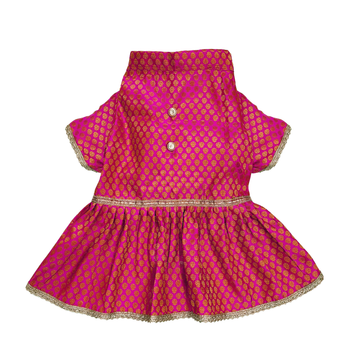Tibetan Mastiff

Tibetan Mastiff
| Breed Highlight: |
|
The Tibetan Mastiff stands well up on the pasterns with strong, tight, cat feet, speaking volumes for its alertness and vigilance. The body is slightly longer than the tail. The head and the tail are the distinctive characteristics of the breed and define its personality. |
| Weight: |
|
Male: 45-72 kg Female: 34-54 kg |
| Height: |
|
Male: 66-76 cm Female: 61-71 cm |
| Life Expectancy: |
| 10-12 yr |
| Litter Size: |
| 5-12 puppies. |
| Breed Appearance: |
|
The broad muzzle is square when viewed from all sides. The large nose is black. The teeth converge in a scissors or level bite. The upper lip usually covers the lower lip. The slightly slanting eyes are almond shaped, deep-set and medium in size. Eye color comes in shades of brown. The pendant ears are V-shaped, hanging forward close to the head. The neck is muscular and arched with a moderate dewlap. The dewlap is more prominent in males than in females. The topline is level. The feathered tail is curled over the back. The front legs are straight with feathering. The feet are cat-like and may have feathering between the toes. Dewclaws are sometimes removed |
| History: |
|
In the early 20th century, King George V introduced a pair of Tibetan Mastiffs, and enough of the breeds were available in England in 1906 to be exhibited at the Crystal Palace show. However, during the gloomy days of the World War, the breed lost its glory and charm. In the long run, the breed almost became extinct in the country of England. |
| Originally: |
|
The Tibetan Mastiff is said to have descended from the famous Tibetan dogs that were the source of the majority of Molossers and Mastiffs throughout the world. The ancient Tibetan Mastiff may have been in existence as early as 1100 BC. These mastiffs gradually developed into the modern Tibetan Mastiff during the time period when they were isolated in Tibet’s Himalayan mountains for centuries. |
| Currently Used As: |
|
Tibetan Mastiffs are currently used as guard dogs for livestock and property protection. They can also be handy for shielding their masters’ house. |
| Training: |
|
As is the case with flock guardian breeds, they are intelligent and obdurate to the core. Obedience training is recommended (although it is only mildly successful with some individuals) because of its immense strength and resolve. Unless they are to be used exclusively as livestock guardians, socialization obedience training is also pivotal for this breed because of its reserved attitude towards strangers and guardian instincts. |
| Health&Care: |
|
They are prone to hip dysplasia, thyroid problems, skin conditions and ear infections, a genetic problem called Canine Inherited Demyelinative Neuropathy (CIDN), which is fatal. The disorder becomes evident in puppies between 7 and 10 weeks of age and the pup passes away after 4 months of age. |
| Living Condition: |
|
The Tibetan Mastiff can reside in an apartment comfortably if it is adequately exercised. These dogs are not known for being lively and vigorous indoors. |
| Excersie: |
|
The Tibetan Mastiff needs to be taken on daily walks. While out on the walk, the dog must be made to heel beside or behind the person holding the lead, as in a dog's mind the leader leads the way, and that leader needs to be the human. Be sure to exercise caution so that the bones, muscles and joints of the young dog do not get subjected to excessive pressure during the growing stage by not overtaxing the physical side of its life. However, because of their migration instinct, they will still need to walk on a daily basis. |
| Grooming: |
|
The Tibetan Mastiff should be brushed regularly. In the winter season, the coat has an abundance of very thick hair, which sheds once a year (during the sultry summers) for the duration of a month. During this time period, your dog should be brushed and combed every day. The Tibetan Mastiff is sometimes beneficial for allergy sufferers, depending on the individual and the type of allergy they have. |
| Pros: |
|
There are a plethora of merits of owning a giant breed dog. They are trustworthy and devoted. They are protective and gentle. They usually evince a favorable attitude toward children. They can be hailed as the best family dogs around. They can be truly appeal to friends, neighbors and complete strangers. |
| Cons: |
|
There are some downsides to owning a giant breed. It does usually require a hefty price tag to own one. Giant breeds consume more food than small and medium sized dogs. And, you may need to nourish and nurture your giant dog with a special diet to safeguard it as much as possible from joint issues or to evade the problems that are typically associated with obese dogs. |












